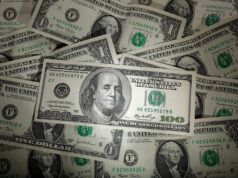Philippine economy may shrink by 3% on lockdown — S&P
The Philippine economy could shrink by 3% this year, the price to pay for having one of the toughest lockdowns in the world, according to S&P Global Ratings.
The latest estimate is much worse than the 0.2% contraction expected by the rating company in April and the 6% growth forecast it gave in December.
“We expect the permanent costs of COVID-19 to be highest in India and the Philippines, due mainly to the severity of lockdowns, and in Thailand given its high exposure to international travel,” S&P said in a note on Friday.
President Rodrigo R. Duterte locked down the main Philippine island of Luzon in mid-March, suspending work, classes and public transportation to contain a novel coronavirus pandemic that has sickened more than 34,000 and killed about 1,200 people in the Philippines. People should stay home except to buy food and other basic goods, he said.
The President extended the so-called enhanced community quarantine twice for the island and thrice for Manila, the capital and nearby cities where infections have been mostly concentrated.
The lockdown in many parts of the country including Metro Manila has since been relaxed, but mass gatherings remained banned.
S&P’s outlook for the country was better than the expected contractions in Thailand this year at 5.1%, India, Singapore and New Zealand at 5% each and Japan at 4.9%.
But it was worse than the expected contractions in Malaysia at 2%, South Korea at 1.5%, and the projected growth in Indonesia at 0.7%, Taiwan at 0.6% and Vietnam at 1.2%. The contraction for the Asia-Pacific region was estimated at 1.3% this year.
The debt watcher noted that despite a strict lockdown, coronavirus infections in the country “remain stubbornly high.”
“Economies that flattened COVID-19 curves quickly (China, Korea, and Taiwan) and launched substantial and well-targeted stimulus (Australia, Japan, New Zealand and Singapore) are expected to escape with less permanent damage, ranging from 0.5% to 3%,” it added.
The local service sector will bear the brunt of the lockdown because it depends on face-to-face interactions, S&P economist Vincent Conti said.
Consumption was expected to suffer because majority of Filipinos are employed in the service sector, he said in an e-mail.
“That nexus between weaker labor markets, balance sheets and consumption will mean a much more difficult return to the economy’s pre-COVID-19 trend level of output,” he added.
The country’s unemployment rate quickened to 17.7% — equivalent to 7.25 million jobless Filipinos and the fastest since 2005 — from 5.1% a year earlier, according to the local statistics agency.
More than 54,000 overseas Filipino workers have come home, which could worsen the joblessness. The country’s consumption-driven economy shrank by 0.2% in the first quarter.
S&P expects the Philippine economy to grow by 9.4% next year as economic activities resume.
“Risks to the recovery path include the persistent spread of the coronavirus and weakened balance sheets in the private sector due to the length and magnitude of the downturn,” according to the report.
Mr. Conti said the depth of this year’s recession provides such a low base that even a gradual reopening of the economy would generate very high growth rates next year. “Growth numbers will hide the fact that the economy will still be operating far below pre-COVID-19 trend levels.” — Luz Wendy T. Noble



